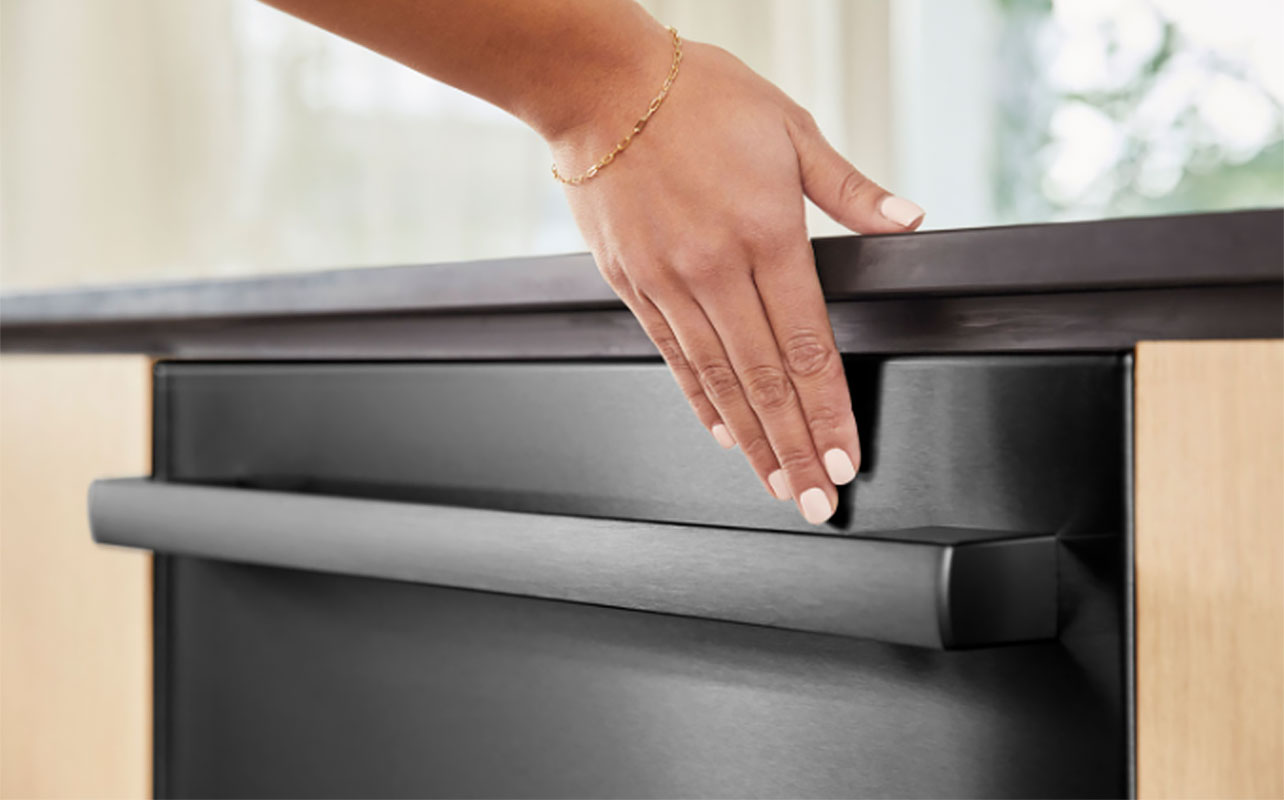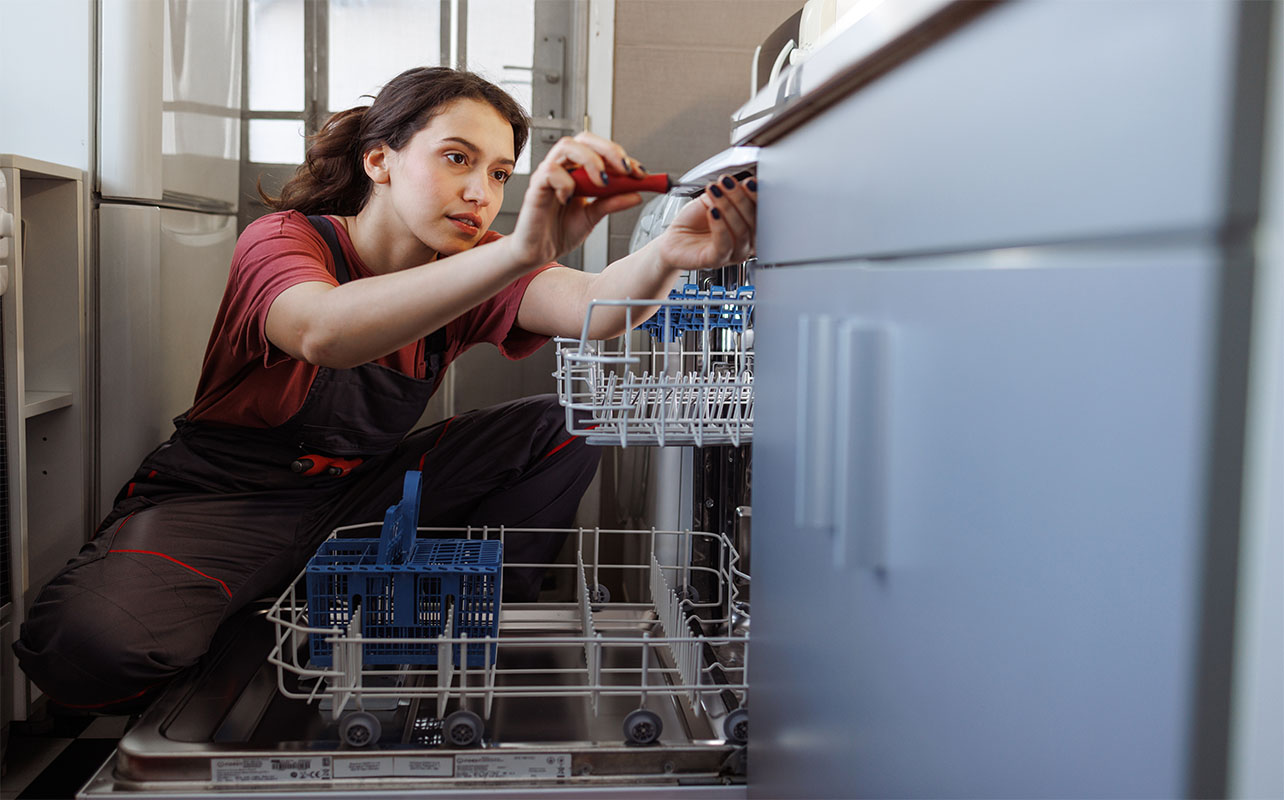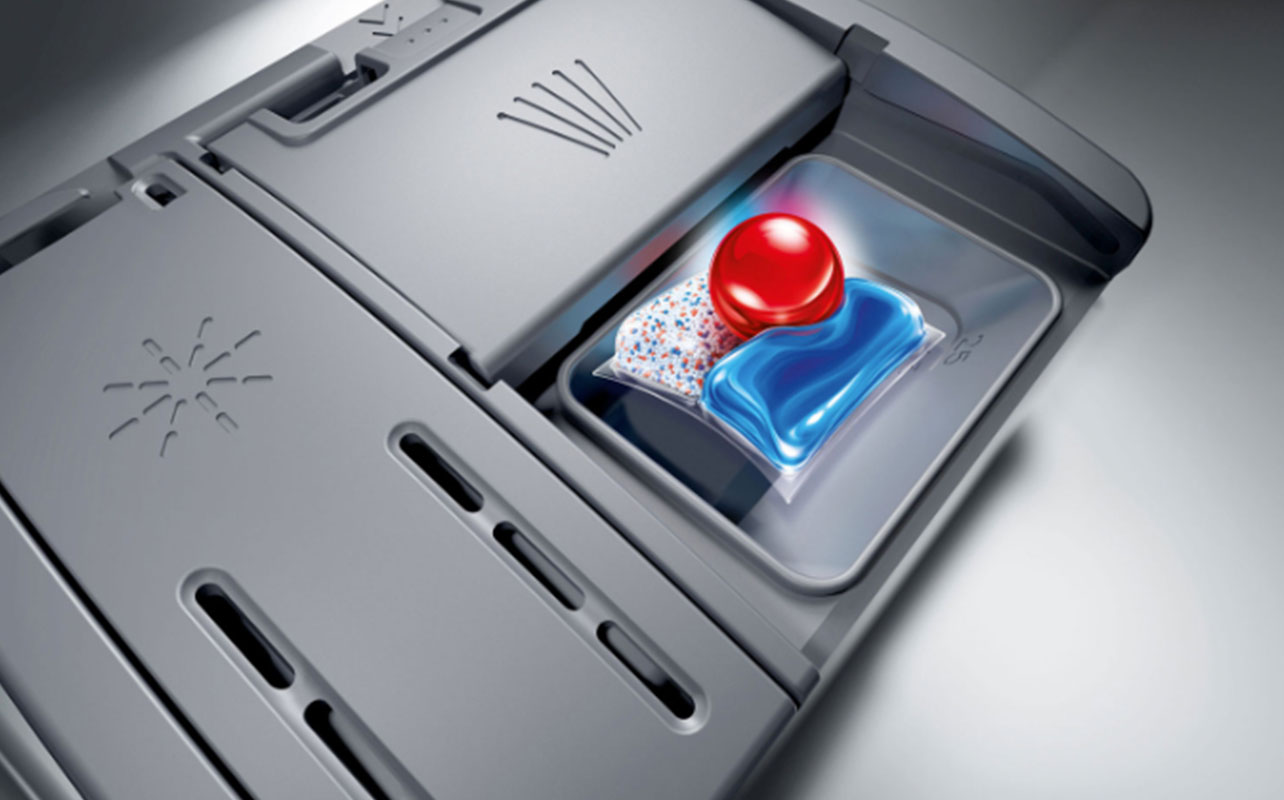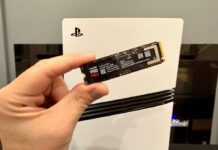
If you’ve landed on this page after seeing a mysterious “E15” flash on your Bosch dishwasher, you’re in the right place. Error codes on dishwashers can be frustrating—especially when your dishes are still dirty and you’re left guessing what went wrong. The E15 error is a safety feature. It’s the dishwasher’s way of telling you there’s a leak or overflow, and it’s shutting things down to prevent water damage. So while it’s a hassle in the moment, it’s your appliance doing exactly what it’s designed to do.
This guide is here to help you understand the E15 error on a Bosch dishwasher, what causes it, how to fix it step-by-step, and what to do if the issue sticks around.
Understanding error code E15
E15 means your Bosch dishwasher thinks there’s water where it shouldn’t be—specifically, in the base of the unit. This is thanks to a built-in safety system designed to detect leaks and prevent flooding. At the bottom of the dishwasher is a shallow base pan. If water from a leak or overflow collects there, a small float sensor (often made of Styrofoam or plastic depending on the model) rises with the water level. This triggers a safety switch that sends a signal to the control board, shutting off the water intake and stopping the cycle—cue the E15 error code.
Common causes of E15 error
Understanding what can trip this error helps you fix it faster. Here are the usual suspects behind an E15 on Bosch dishwasher:
- Using the wrong detergent—or too much of it: Households with soft water are especially prone to this. Using regular dish soap instead of dishwasher detergent, or just pouring in too much, can cause excessive suds. These suds can overflow and leak into the base, triggering the E15 code.
- Leaking hoses or seals: Over time, wear and tear on internal hoses or door seals can cause drips or steady leaks that collect in the base tray.
- Clogged or damaged spray arms: Spray arms are the rotating pieces at the bottom (and sometimes the top) of your dishwasher that shoot out jets of water to clean your dishes. When spray arms get clogged, cracked, or dislodged, water can shoot in the wrong direction—right into the seals or vents. That water can find its way into the base and set off the Bosch code E15.
- Dishwasher isn’t level: If your Bosch dishwasher isn’t installed on a level surface, water may pool in areas it shouldn’t. Uneven surfaces can lead to poor drainage and eventual leakage.
- Sump basin or pump issues: The sump basin collects water at the bottom of the dishwasher. If it’s cracked or the sump pump is malfunctioning, you might get water leaking underneath.
Step-by-step troubleshooting guide
Follow this step-by-step guide to clearing the E15 error on your Bosch dishwasher. Here are some tools you might need:
- Towels or a sponge
- A screwdriver (typically Phillips head)
- A spirit level or a level app on your phone
- A flashlight
- A wet/dry vacuum (optional, but helpful)
Remember: If you’re working with any electronic components—like resetting the water safety switch or removing the kick plate—be sure to unplug the dishwasher first to avoid the risk of electric shock. While this guide applies to most Bosch models, be sure to consult your specific model’s manual for any unique instructions. Now, roll up your sleeves and get troubleshooting.

Step 1: Perform a hard reset
Sometimes, the error is temporary and just needs a reset: unplug your dishwasher from the outlet or turn off the circuit breaker, wait about 5 to 10 minutes, and then plug it back in or flip the breaker. This gives the control board a chance to clear minor glitches. If the Bosch dishwasher E15 code disappears, you’re in luck. If not, on to step two.
Step 2: Inspect and clean the dishwasher
Remove the bottom rack and check for dirt. Some of parts of dishwasher are prone to grime and gunk that can force water where it doesn’t belong:
- Spray arms: These are the plastic or metal arms that spin during the wash cycle and spray water onto your dishes. Unscrew them and rinse under the tap. Look for clogs in the nozzles—bits of food or mineral deposits can block water flow.
- Filter: Located at the bottom of the tub, this catches food particles and debris. Twist and lift it out, clean off any gunk, and rinse thoroughly with warm water.
- Door seals: These are the rubber gaskets around the door that keep water in. Wipe them down with a damp cloth and check for any cracks or wear.
Step 3: Check for leaks
Check for visible signs of leaking. First, look behind the unit and inspect the water inlet and drain hose for cracks or drips. Then if you’re handy, remove the kick plate and shine a flashlight into the base tray. Any puddles? That’s your problem area. Dry everything with towels or a wet/dry vacuum. Once dry, you can try another hard reset to see if the issue clears.
Step 4: Ensure proper leveling
Use a spirit level on the bottom edge of the dishwasher door (or a phone with a level app). If the level is off, adjust the front feet by twisting them until the unit is level front-to-back and side-to-side. Some models have rear leveling feet that can be adjusted via a screw at the front. Improper leveling can cause pooling and false leak detection, especially during drainage.
Step 5: Reset the water safety switch
The water safety switch is the hero behind the E15 Bosch dishwasher alert. It’s the tiny but mighty sensor that stands guard at the bottom of your dishwasher, detecting even the smallest amount of unwanted water. Once the leaks are gone, it’s important to reset it. Here’s how to do it:
- Unplug the unit
- Remove the kick panel at the bottom front (usually a couple of screws)
- Carefully dry the base tray using towels. Important: If you’re using a hair dryer to speed up the drying process, be careful not to overheat any components. Stick to a low heat setting and keep the dryer moving. Prolonged exposure to high temperatures can warp plastic parts or damage wiring.
- Look for a small float switch—often a Styrofoam piece or sensor. If it’s stuck in the “up” position due to water, drying it out will help reset it.
- Once dry, put everything back together and plug the dishwasher back in
- Run a rinse cycle to test. If no error returns, you’ve done it
Preventive maintenance tips

Once you’ve cleared the error, it’s worth taking a few steps to make sure you don’t see that E15 on Bosch dishwasher again anytime soon.
- Use the right detergent: Stick with high-efficiency dishwasher detergents and go easy on the amount, especially if you have soft water.
- Clean regularly: Give the spray arms, filters, and seals a good rinse every few weeks.
- Level your dishwasher: Double-check its alignment if you’ve recently moved or installed it.
- Check for leaks occasionally: Look behind and beneath your dishwasher every few months. Catching small leaks early saves bigger headaches down the road.
When to seek professional help
Sometimes, even the best DIY efforts don’t cut it. If you’ve followed all the steps and still see E15 on a Bosch dishwasher, it might be time to call in a pro. You should contact a certified technician if:
- The sump pump is faulty or making unusual noises.
- There’s visible damage to internal parts.
- The E15 code keeps coming back despite cleaning and drying the base.
Bosch Canada customer support can be reached at 1-800-944-2904 or visit Bosch service page.
From error code to easy fix
The E15 code is a helpful feature on your Bosch dishwasher. It’s a safety measure that prevents leaks before they damage your kitchen. By understanding what triggers it and following proper troubleshooting process, you can identify the problem without much stress or seek professional help if necessary. To prevent issues on your dishwasher, perform regular maintenance for fewer interruptions.
If this guide helped you solve your Bosch dishwasher E15 error, share it with someone who might need it too.
This article was drafted using AI technology and then reviewed, fact-checked, and revised by a member of our editorial team.





